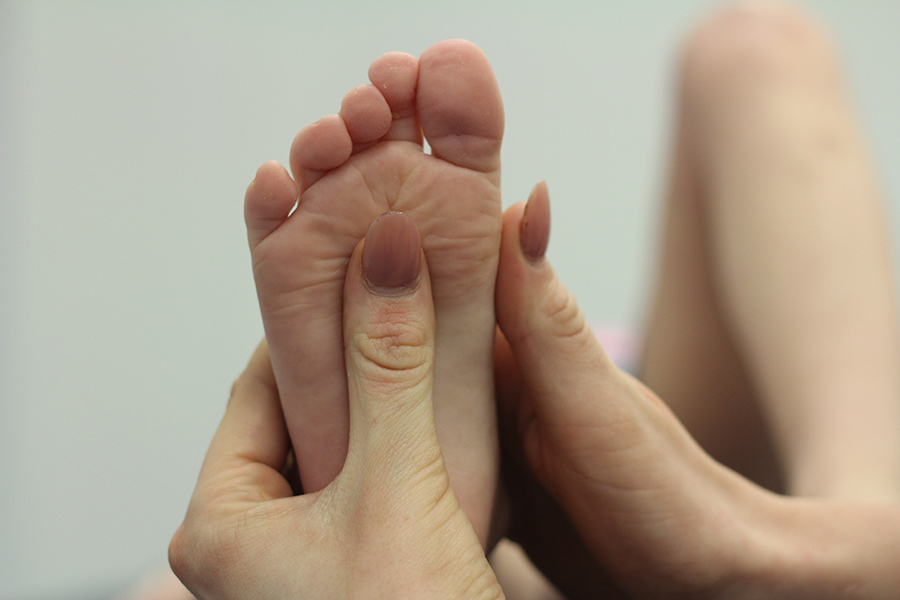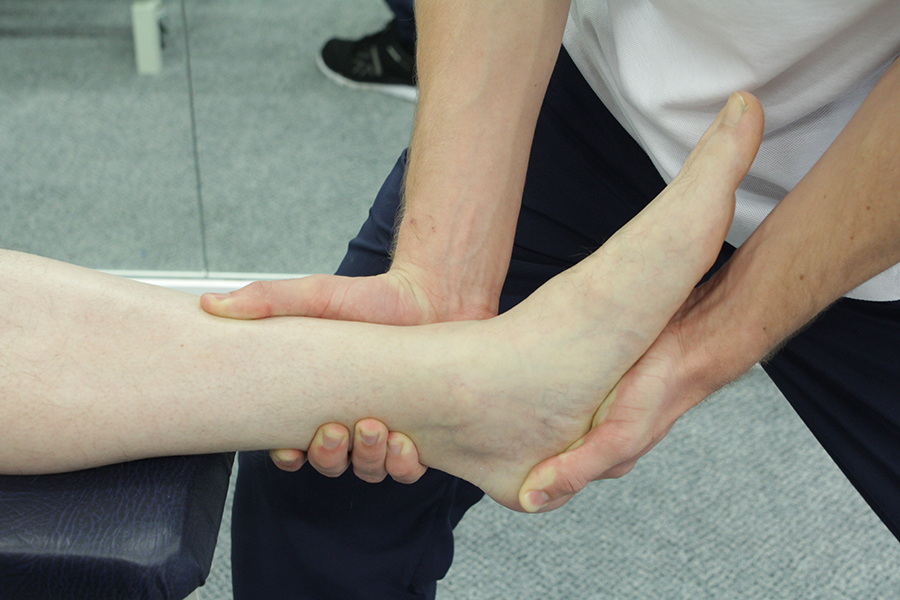Flat feet
Flat feet are common and for some people they produce no symptoms. For other people flat feet can be a great source of pain, which can be in the foot itself, the ankle, the shin, the calf, the knee, the thigh, back or even the shoulder. This is because the foot is part of a kinetic chain. If one part of the kinetic chain is out of alignment it puts extra strain on other parts of the body. If the kinetic chain is out of alignment this means that the body is not working as efficiently as it could.
What are flat feet?
A flat foot is one that lacks the medial longitudinal arch. The foot consists of two arches, these are; the lateral longitudinal arch and the medial longitudinal arch.
What causes flat feet?
Flat feet have a number of causes, these include:
- Over-pronation: pronation refers to the rolling in movement of a joint in the foot known as the subtalar joint. Pronation is not an abnormal movement; everybody's feet pronate which is necessary to absorb shock when walking. Some people's feet however over-pronate, this means that the foot is pronating (rolling in and flattening) at the wrong stage of the gait cycle, placing more weight on the inside of the foot. Causes of over-pronation can include; being overweight, tibialvarum (bowed legs), and Leg length difference.
- Family history
- Arthritis
- Tendon rupture
- Tarsal tunnel coalition
- Injury
- Posterior tibial tendon dysfunction
- Certain medical conditions, for example; Down syndrome, cerebral palsy, spina bifida, muscular dystrophy, and ligamentous laxity.
What are the signs and symptoms of flat feet?
The signs and symptoms of flat feet may include the following:
- Pain/aching, this can be in one or more of the following places:
- The arch of the foot
- Heel
- Ankle
- Calf
- Shin
- Knee
- Thigh
- Lower back
- Shoulder
- Difficulty standing on tip toes
- Ankles rolling inwards
- Shoe wear will be greatest at the heel on the inside and at the forefoot on the outside
- Bunions and/or hammer toes
Types of flat foot
Flat feet fall into one of two categories, they can be:
- Flexible flat foot: this type of flat foot has an arch when non weight-bearing, however upon standing this collapses. Flexible flat foot is the most common type of flat foot.
- Rigid flat foot: the arch is neither present when non weight-bearing or when standing

How are flat feet diagnosed?
Your podiatrist will perform a biomechanical assessment. A biomechanical assessment involves assessing the quality and range of motion of the joints in the foot and sometimes the knee and hip. The podiatrist will then observe your gait (the way you walk). All the components of the assessment will provide vital information as to the cause of the flat foot and the best cause of action
Benefits of podiatry for flat feet?
Podiatry can benefit you if you have flat feet by:
- Supporting the medial longitudinal arch
- Reducing painful symptoms
- Improving foot function
- Improving muscle strength
- Improving muscle flexibility
- Improving gait and posture
Benefits are achieved via a variety of treatment methods, including orthoses and exercises. If treatment is necessary your podiatrist will discuss the options most suitable for you with you at the end of the assessment.
What would podiatry for flat feet involve?
Your podiatrist will begin by taking a thorough medical and social history. They will then perform a biomechanical assessment and examine your joints, your muscle power and tone, and perform a gait analysis. The results of the biomechanical assessment and gait analysis will provide your podiatrist with the necessary information to formulate a treatment plan.
This is done through, for example:

Summary
Flat feet are common and can cause a lot of pain, which can be felt anywhere from the sole of the foot up to the shoulder, depending on the compensatory mechanisms in place. Flat feet can be either flexible or rigid and there are a number of causes. If you are concerned and you would like to see us at Chiropody.co.uk please book in for an assessment.
To arrange an assessment with at Chiropody.co.uk please Email office@chiropody.co.uk or call 0330 088 4222.Save 5% by booking an appointment online.



We work with:

Individuals

Organisations

Health professionals
Get in Touch!
0330 088 4222
If you would like to speak to one of our specialists then please complete this form.
We are open 7 days a week








